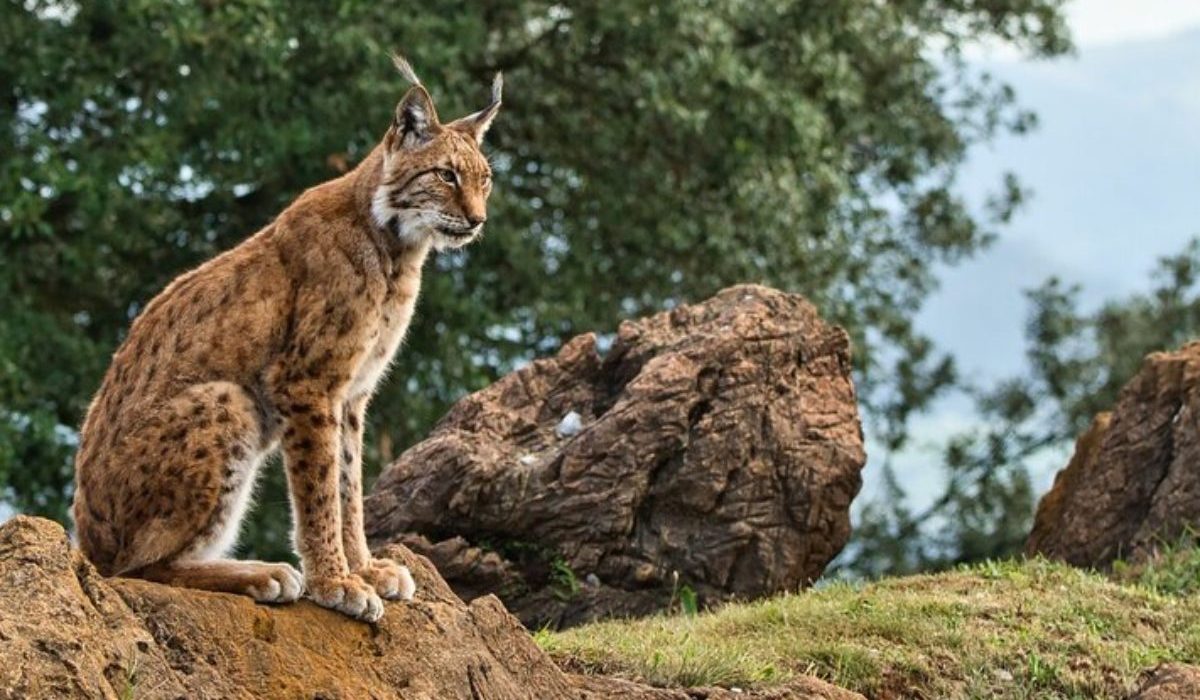Nearly two decades back, the Iberian lynx species a pointy-eared wildcat unique to the Iberian Peninsula, was on the brink of extinction. In 2001, there were just 62 mature Iberian lynx left. However, thanks to dedicated and cooperative conservation initiatives, this medium-sized, colored brown cat, known for its distinctive pointed ears and beard-like strands of facial locks, has made an incredible recovery. As of Thursday, the International Union for Conservation of Nature (IUCN) deemed the Iberian lynx no longer endangered, instead classifying it as vulnerable.
Iberian Lynx Early Recession:
The Iberian lynx population’s precipitous decrease was closely tied to the extinction of its major prey, the European rabbit. Changes in farming techniques, habitat deterioration, and more human activity worsened the problem. The loss of dense forests, Mediterranean scrublands, and grazing land, which are critical habitats for the lynx, contributed significantly to the species’ extinction.
Concerned about the precipitous reduction, environmentalists launched a series of efforts aiming at breeding, adoption, and restoring habitat. Efforts were focused on enhancing and protecting habitats like thick woods and Mediterranean scrublands. By 2022, the efforts had paid off, with nature preserves in southern Portugal and southern Spain estimating an abundance of 648 adult lynx. The most recent census from last year suggests a population of more than 2,000 adults and youngsters, a significant milestone recognized by the IUCN.
Vital for Recovery of Iberian Lynx:
The European rabbit species has been revitalized, which has been important to the lynx’s resurgence. Agricultural changes had significantly reduced rabbit populations, resulting in a food crisis for the lynx. Focused efforts to revive rabbit populations have proved critical, providing a consistent food source that has aided an ongoing rise in lynx populations. Craig Hilton-Taylor, chief of the Red List of the IUCN unit, stressed the necessity of this method, citing an “exponential increase in population size.”
The introduction of captive breeding aimed at boosting the population of lynx in monitored conditions critical to the recovery effort. In Spain, the Donana Biological Center was instrumental in successfully raising lynxes in captivity and laying the groundwork for reintroduction attempts.
Cooperative Efforts for Iberian Lynx Conservation:
The amazing restoration of the endangered Iberian lynx is regarded as the most impressive recovery of a cat breed accomplished by conservation. This achievement is due to the dedicated partnership of public agencies, scientific institutions, non-governmental organizations (NGOs), private businesses, and local communities, which include landowners, landowners, gamekeepers, and hunters. Francisco Javier Salcedo Ortiz, the coordinator of the EU-funded LIFE Lynx-Connect endeavor, emphasized the significance of this multidisciplinary collaboration.
Community Participation and Interest:
Community involvement proved critical to the achievement of the conservation activities. Conservationists recognized the necessity of forming alliances with the local population, landowners, and individuals whose livelihoods were inextricably linked to lynx habitats. Outreach activities were launched to promote awareness about the significance of lynx preservation, educate individuals about coexistence with wildlife, and rally support for conservation efforts.
Community groups have played an important part in the lynx’s recovery. IUCN has worked relentlessly to promote awareness about the lynx’s significance in the ecosystem, resulting in fewer fatalities from poaching and carcasses. In addition, compensation plans for farmers who lose their livestock due to lynx predation have helped to reduce possible confrontations. Since 2010, around 400 Iberian lynxes have been returned to various sections of Portugal and Spain, increasing their occupied territory from 449 square kilometers in 2005 to a minimum of 3,320 square kilometers today.
These collaborative efforts relied heavily on non-governmental organizations (NGOs) and conservation organizations to facilitate and mediate. They provided technical assistance, scientific study, and financial support for conservation endeavors and initiatives. Partnerships between government agencies, non-governmental organizations (NGOs), academic institutions, and commercial sector companies increased the overall capability for lynx conservation and secured long-term sustainability.
Continuous Follow-up:
Monitoring and research are key components of the preservation approach. Conservationists used a variety of methods, including camera traps, satellite telemetry, genetic testing, and ecological modeling, to monitor lynx numbers, track individual actions, and assess habitat utilization. This research yielded essential knowledge into lynx attitudes, population growth, and responses to alterations in the environment.
Adaptive management proved critical for revising conservation plans in response to new information and increasing issues. Conservationists examined and changed management plans regularly to reflect shifting circumstances, such as changes in prey supply, habitat quality, or environmental effects. This cyclical process of adaptation and learning guaranteed that conservation efforts were both efficient and adapted to the lynx population’s demands.
Ongoing Difficulties and Future Concerns:
Despite good improvements, the Iberian lynx remains not fully safe. The species’ survival is inextricably linked to the resilience of the rabbit inhabitants, which are still vulnerable to viral outbreaks and other health conditions that could be spread by domesticated animals. Furthermore, climate change offers a severe concern, as rising temperatures and wildfire frequency in the region of the Mediterranean may influence lynx habitats.
Final Thoughts:
The Iberian lynx’s voyage from near-extinction to conservation success provides hope for various species facing similar risks. It highlights the effectiveness of collaborative conservation initiatives, community involvement, and responsive management in wildlife restoration. As the Iberian lynx faces new difficulties, its story offers an encouraging illustration of what can be accomplished when humanity works together to safeguard and maintain the natural world.

